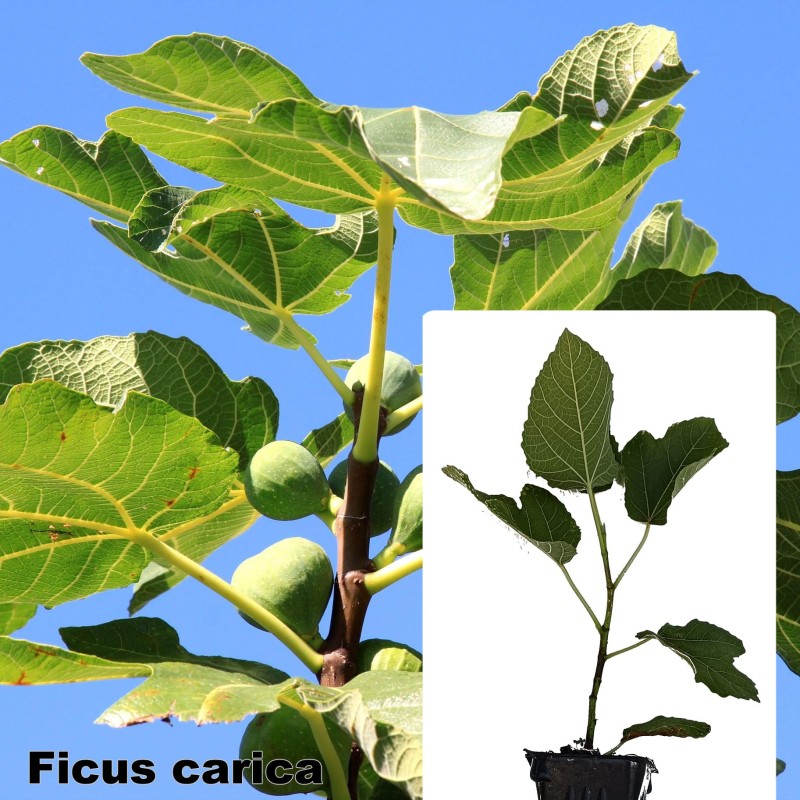The fig is the edible fruit of Ficus carica, a species of tree or shrub in the flowering plant family Moraceae, native to the Mediterranean region, together with western and southern Asia. It has been cultivated since ancient times and is now widely grown throughout the world. Ficus carica is the type species of the genus Ficus, which comprises over 800 tropical and subtropical plant species. A fig plant is a deciduous tree or large shrub, growing up to 7–10 m (23–33 ft) tall, with smooth white bark. Its large leaves have three to five deep lobes. Its fruit (of a type referred to as syconium) is teardrop-shaped, 3–5 cm (1–2 in) long, initially green but may ripen toward purple or brown, and has sweet soft reddish flesh containing numerous crunchy seeds. The milky sap of the green parts of the plant is an irritant to human skin. In the Northern hemisphere, fresh figs are in season from early August to early October. They tolerate moderate seasonal drought and can be grown even in hot-summer continental climates. Figs can be eaten fresh or dried, or processed into jam, rolls, biscuits and other types of desserts. Since ripe fresh figs are easily damaged in transport and do not keep well, most commercial production is in dried and processed forms. Raw figs contain roughly 80% water and 20% carbohydrates, with negligible protein, fat and micronutrient content. They are a moderate source of dietary fiber. In 2018, world production of raw figs was 1.14 million tonnes, led by Turkey and North African countries (Egypt, Morocco, and Algeria) as the largest producers, collectively accounting for 64% of the total.

